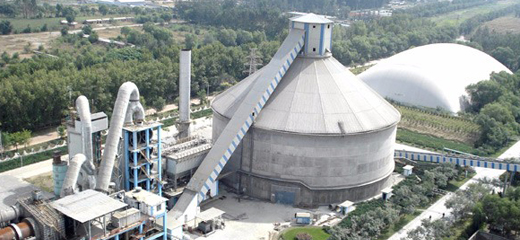The Impact of Steel Ladle Functional Changes on Refractory Materials
The Impact of Steel Ladle Functional Changes on Refractory Materials
As steel ladles have evolved from simple containers to key equipment for secondary refining, the operating conditions for refractory materials have changed significantly:
Higher Temperatures: Molten steel temperatures in refining ladles can be 50–100°C higher than in ordinary ladles, accelerating erosion of refractory materials.
Increased Steel Circulation: Techniques like argon blowing and electromagnetic stirring intensify the movement of molten steel, increasing wear on refractory materials.
More Aggressive Slag: High-alkalinity slag from deep desulfurization and phosphorus removal operations in secondary refining is more erosive.
Extended Holding Time: Longer holding times for molten steel reduce the service life of refractory materials.
Vacuum Conditions: High-temperature vacuum operations increase the evaporation rate of refractory materials and reduce their erosion resistance.
Requirements for Refractory Materials in Steel Ladles
To meet the demands of secondary refining, refractory materials must:
Withstand High Temperatures: Without melting or softening under prolonged exposure to molten steel.
Resist Thermal Shock: Avoid cracking or spalling during repeated temperature changes.
Resist Slag Erosion: Withstand the corrosive effects of high-alkalinity slag.
Maintain Mechanical Strength: Endure the agitation and scouring of molten steel.
Expand Appropriately: Form a cohesive lining under high-temperature conditions.
The working lining, which directly contacts molten steel and slag, must:
Be Easy to Install: Reduce labor intensity and increase productivity, with good baking adaptability to lower energy consumption and extend service life.
Possess High-Temperature Properties: Have high refractoriness, strength, and chemical stability to prevent contamination of the molten steel.
Resist Erosion and Penetration: Minimize wear from slag and molten steel to reduce consumption and contamination.
Maintain Thermal Shock Resistance: Prevent spalling when in contact with molten steel.
Provide Insulation: Reduce heat loss and maintain stable molten steel temperatures.
Be Easily Removed: Separate easily from the permanent lining after use to minimize damage and extend ladle life.

The typical steel ladle turnover process includes steelmaking, refining, continuous casting, and preparation. Deterioration causes include:
Erosion by Molten Steel and Slag: Severe at the slag line due to high temperatures.
Damage from Refining Processes: Such as LF treatment causing severe wear on unburned bricks.
Thermal Shock During Pouring: Cracking and spalling due to temperature changes.
Mechanical Scouring: Intense wear on the ladle bottom during steel loading.
To reduce spalling:
Enhance Slag Resistance: Improve the ability to withstand slag penetration.
Lower Porosity: Reduce slag penetration channels.
Form Protective Layers: Create high-melting-point compounds to block slag.
Increase Slag Viscosity: Reduce slag erosiveness.
Main Functions of Steel Ladle Permeable Bricks
Permeable bricks in secondary refining serve to:
Regulate Temperature: Ensure uniform molten steel temperature.
Distribute Alloys and Deoxidizers: Promote uniform distribution in the ladle.
Remove Inclusions: Carry non-metallic inclusions into the slag to purify the molten steel.
To fulfill these functions, permeable bricks must have:
Good Permeability: For effective gas blowing and steel stirring.
High-Temperature Erosion Resistance: Withstand high-alkalinity slag at elevated temperatures.
High-Temperature Wear Resistance: Endure mechanical scouring during argon blowing and cleaning.
Thermal Shock Resistance: Withstand rapid temperature changes during ladle operation.
Easy Installation: Ensure safe and reliable placement in the ladle.
Inquiry Now
Please leave your e-mail and we will contact you as soon as possible
contact us
Your satisfaction is our top priority. Whether you have questions, need support, or want to share feedback, our dedicated team is ready to assist you every step of the way.